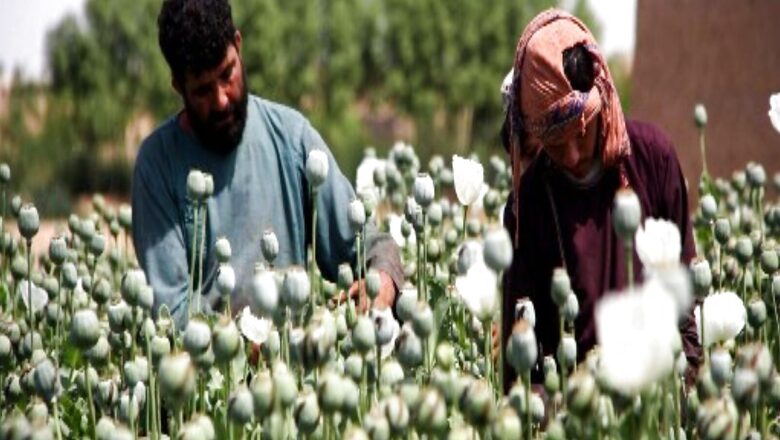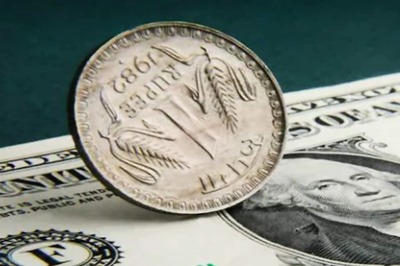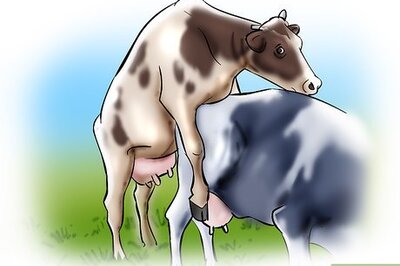
views
When the king of Afghanistan visited India in 1919, he met a young businessman in Mumbai, named Ebrahim Sultanali Patanwala, a businessman from Rajasthan, who manufactured perfumes and beauty products. He presented the king with a hamper filled with his company’s products. In this hamper was a jar of white cream with no name. The king remarked that the cream reminded him of Afghan snow. And so, the unnamed cream that was popular, came to be known as Afghan Snow. With the passage of time, the white heroin powder of Afghanistan borrowed the name, Afghan Snow. Similarly, cocaine, which is a white crystalline powder is known by the slang term Arctic White, in the United States.
Heroin is under international control and is listed in Schedule I of the United Nations 1961 Single Convention on Narcotic Drugs. The fact sheet and key findings of the Afghanistan Opium Survey 2021 state that the “production of opiates (opium, morphine, and heroin) is arguably Afghanistan’s largest illegal economic activity. The gross output of the Afghan illicit opiate economy was estimated to be $1.8 – $2.7 billion in 2021. The total value of opiates, including domestic consumption and exports, stood at between 9 to 14 percent of Afghanistan’s GDP, exceeding the value of its officially recorded licit export of goods and services (estimated at 9 percent of GDP in 2020).
The Taliban banned the cultivation of opium poppy and all narcotics under strict new laws in April 2022. But opium prices have soared following the announcement of the cultivation ban in April. Income made by Afghan farmers from opium sales more than tripled, from $425 million in 2021 to $1.4 billion in 2022. However, a United Nations Development Program (UNDP) survey concludes that the increase in income did not translate into purchasing power, as inflation had soared during the same period, with the price of food increasing by 35 percent on average.
Currently, terrorist groups functioning in Afghanistan, namely Al-Qaida, ISK, Tehrik-e-Taliban Pakistan (TTP), East Turkestan Islamic Movement (ETIM, also known as the Turkestan Islamic Party), and the Haqqani network meet their operating expenses from the illicit cultivation, production and trafficking of heroin. Around 84 percent of countries in the world are connected to the drug pipeline originating in Afghanistan, according to a recent North Atlantic Treaty Organisation (NATO) report. According to the United Nations Office on Drugs and Crime (UNODC), “At current levels, world heroin consumption (340 tonnes) and seizures represent an annual flow of 430-450 tonnes of heroin into the global heroin market. Of that total, opium from Myanmar and the Lao People’s Democratic Republic yields some 50 tonnes, while the rest, some 380 tonnes of heroin and morphine is produced exclusively from Afghan opium. While approximately 5 tonnes are consumed and seized in Afghanistan, the remaining bulk of 375 tonnes is trafficked worldwide via routes flowing into and through the countries neighbouring Afghanistan.”
Another white powder emerging as a strong rival for heroin in Afghanistan is methamphetamine, which usually comes in the form of a crystalline white powder that is odourless, bitter-tasting and dissolves easily in water or alcohol. Crystal meth comes in clear chunky crystals resembling ice and is most commonly smoked. While meth is usually white to off-white, food colours are used to make the product more attractive and hence, meth is available also in colours like yellow, brown, orange, pink, grey or even clear. The Washington Post in May 2022 reported that the meth industry is growing at breakneck speed in Afghanistan. Located in the Farah province, which shares a 290-kilometre border with Iran, the Abdul Wadood Bazar puts up for sale around 3,000 kg of methamphetamine daily, which is manufactured by more than 500 factories in the Bakwa region alone.
Contemporary terrorist movements in Afghanistan rely solely on the country’s voluminous illicit heroin trade and use the drug trade profits to recruit and pay cadres, acquire weapons and equipment, and bribe officials. With the continuing international freeze on Afghanistan’s economic assets and the meagre financial support the country receives as international aid, there is no other alternative but to spur the heroin and meth trade to more enhanced production. The Taliban, which is now in power in Afghanistan, can only be expected to further increase the cultivation of poppies, and manufacture of heroin and meth, in the drought-ridden country to keep itself in power and relevance. Frictions over internal supremacy and styles of governance could make leaders of factions tighten control and dominance over the illicit drug trade. The first indication of rifts in the ruling Taliban are emerging. Latest reports of February 23, 2023, indicate that the supreme leader, Hibatullah Akhundzada, is asserting a stronger hand in directing policy, especially banning women and girls from universities and schools. Interior Minister Sirajuddin Haqqani has made sharp comments, “monopolising power and hurting the reputation of the entire system are not to our benefit. The situation cannot be tolerated.” This has evoked a sharp reaction from Zabihullah Mujahed, the top spokesman for the Taliban government, who cautioned that criticism is best voiced privately.
The deepening economic crisis in Pakistan and the volatile Afghan-Pak border can contribute to increased heroin production, terrorism and extremism. India is also experiencing a surge in heroin production in the Af-Pak region. The Directorate of Revenue Intelligence informed the Supreme Court in December 2022, that heroin seizures went up from 273 kg in 2019 to 14,967 kg in 2022. Truly, Afghan Snow no longer beautifies, it only terrifies.
The author is IRS (Rtd), Ph.D. (Narcotics), Former Director General, National Academy of Customs, Indirect Taxes & Narcotics (NACIN). Views expressed are personal.
Read all the Latest Opinions here


















Comments
0 comment